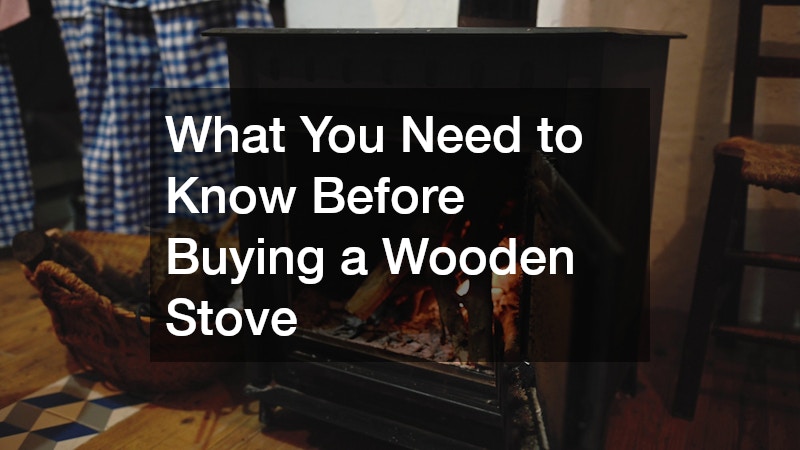
Choosing a wooden stove is an important decision for those looking to add warmth and a traditional touch to their home. With various options and considerations, it's crucial to be well-informed before making a purchase. This article will cover the essential aspects to consider when buying a wooden stove.
Video Source
The combustion process in wooden stoves is designed to burn wood efficiently, ensuring that maximum heat is extracted. This process involves controlled air flow, which regulates the burn rate and improves fuel efficiency. Proper venting is crucial for safety, as it ensures that combustion gases are effectively expelled. Venting systems also play a role in enhancing the draft, helping to keep the fire burning optimally.
Wooden stoves distribute heat through a combination of radiation and convection. Radiated heat directly warms objects and people in the room, while convection circulates warm air throughout the space. Different designs, such as those with built-in fans, can enhance the stove’s ability to distribute heat more evenly. Some models incorporate features like air-wash systems that keep the glass clean while maximizing heat output. The choice of stove materials, like cast iron or steel, can also impact how well heat is retained and distributed. Heavier materials typically hold heat longer, providing sustained warmth even after the fire has died down.
Wooden stoves can be a cost-effective heating solution, particularly in regions where wood is readily available. Compared to electric or gas heating, wood-burning stoves often have lower fuel costs. Investing in a high-efficiency model can further reduce operating costs, as less wood is needed to produce the same amount of heat. In areas where electricity prices are high, a wooden stove can provide a cheaper and reliable alternative.
Wood is a renewable resource, positioning wooden stoves as an environmentally friendly choice for heating. Stoves designed for low emissions ensure that they meet modern environmental standards. Newer models often include technology that reduces particulate matter and volatile organic compounds. Choosing stoves with high efficiency ratings can minimize their environmental impact by making use of every scrap of wood energy possible. Users concerned with sustainability can also opt for sustainably sourced wood, further reducing the ecological footprint. This makes wooden stoves a viable choice for those prioritizing green living.
Selecting the right size wooden stove involves considering the space that needs heating. Stoves are rated by British Thermal Units (BTUs), which indicate the amount of heat they can produce. It's advisable to match the BTU output to the dimensions and insulation quality of your room. Over-sizing or under-sizing a stove can lead to inefficiency and discomfort. Consulting with a professional can provide insights into the most suitable size based on your specific needs and local climate conditions. This helps ensure a balanced and comfortable heating performance.
Wooden stoves are available in a wide array of styles, from traditional cast iron models to sleek, modern designs. The choice of aesthetic can significantly impact the look and feel of your home. Whether you prefer a rustic look or a contemporary flair, there's a stove to fit your interior style. Different finishes, such as enamel or powder coating, also offer varied looks and durability. Choosing the right style not only complements your decor but also enhances the overall ambiance, making your wooden stove a focal point of charm and warmth. Customization options mean your stove can be as unique as your home.
Safe installation is critical to avoid hazards like fires or carbon monoxide buildup. Following manufacturer's guidelines for clearances and venting requirements is essential. Adequate floor protection is also necessary, often requiring non-combustible materials to prevent heat damage or sparks from causing issues. Professional installation is highly recommended to ensure safety standards are met.
Regular maintenance is key to keeping your wooden stove operating safely and efficiently. This includes periodic cleaning of ash and soot build-up, as well as checking for any blockages in the flue. Annual professional inspections can help identify potential issues early, preventing costly repairs or hazards. Regular maintenance not only extends the lifespan of the stove but also ensures optimal performance.
Buying a wooden stove involves careful consideration of factors such as efficiency, size, style, and safety. By understanding how wooden stoves operate, their benefits, and essential safety precautions, you can make an informed decision that meets your heating needs and complements your home.
